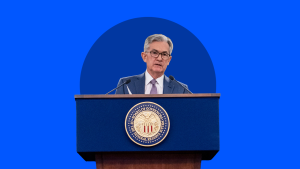Credit Sesame explores why Americans are still spending when recession fears are rising, even as debt grows and confidence in the economy fades.
Hope for the best, prepare for the worst, is how the old saying goes. Lately, consumers seem to be doing the opposite.
The latest Survey of Consumer Expectations from the Federal Reserve Bank of New York shows that consumers expect economic trouble on multiple fronts. You’d never know it, though. Their borrowing and spending patterns show little sign of caution.
Many consumers appear to be bracing for economic trouble while continuing to spend and borrow with little visible adjustment. This contrast highlights a disconnect between expectations and behavior. That gap could increase financial risk if current concerns about inflation, income, and employment prove accurate, making it more important than ever to monitor your credit and protect overall credit health.
Expectations fall for income, jobs, and inflation
The survey found that consumers became more pessimistic about several aspects of the economy and their personal finances during the first quarter of 2025:
- Inflation expectations remained at an average of 3.6% for the year ahead, but rose by 0.2% for the next three years. That brought the three-year expectation to 3.2% a year, the highest level since mid-2022. That was about the peak of the post-pandemic inflation surge. This three-year expectation shows that consumers expect rising inflation to stick around for a while.
- The expectation that unemployment will be higher a year from now rose to its highest level since April of 2020. That was back when pandemic lockdowns caused massive layoffs.
- The median expected growth in household income dropped by 0.2% to 2.6%. That’s the lowest level since April 2021.
In short, households expect inflation to rise, their incomes to drop and the risk of job losses to increase. And that’s not all the bad news….
Consumer debt grows alongside missed payments
Inflation, slowing income growth and rising unemployment would be challenging under any circumstances. What makes them even more threatening is that consumers already have high debt loads and struggle to keep up.
Here are the latest statistics on this problem:
- Based on the Q1 2025 Household Debt and Credit Report from the New York Fed, total consumer debt has grown by 27% over the past five years.
- The fastest growth rate has been in credit card debt, typically the most expensive form of debt.
- Credit cards also have the highest percentage of balances with 90 days or more overdue payments. This percentage has been rising fast. It now stands at 12.31%, the highest in 14 years.
- The late payment problem looks like it might get worse. The Survey of Consumer Expectations found that the expected probability of missing a minimum debt payment in the next three months rose in the first quarter. It now stands at 13.9%, up from 10% just four years ago.
Spending outpaces both income and inflation
With household finances already strained by debt and expectations of a worsening economy, it would be reasonable to see signs of restraint. So far, that shift has not appeared.
Credit card debt declined in the first quarter of 2025, but that’s not remarkable. The first quarter of the year is when people pay their holiday shopping bills. Credit card debt has declined in the first quarter of 21 of the last 22 years (the only time it didn’t, it stayed level). However, credit card debt has risen steadily over those 22 years, from $700 billion to $1.182 trillion.
Significantly, consumer debt overall rose in the first quarter of 2025, so people are still borrowing. Based on their spending plans, they expect to continue borrowing. The Survey of Consumer Expectations found that households expect their spending to grow twice as fast as their incomes over the next year, and faster than the inflation rate.
So, despite having trouble paying for the debt they’ve already got, consumers are on track to take on even more.
Credit card debt dips in Q1 but remains elevated
The recent decline in credit card debt offers a modest sign of improvement. Consumers have reduced balances in 21 of the last 22 first quarters, suggesting that short-term discipline is possible.
Given that the New York Fed’s survey points to growing concerns about the economy, a more sustained effort to reduce debt could help households prepare for potential financial stress.
Time to align expectations with action
Consumers are not blind to the economic outlook. They see the possibility of rising inflation, falling income, and greater job insecurity. But so far, their financial decisions tell a different story.
Spending continues to rise, debt is growing, and delinquencies are increasing. That disconnect could leave many households vulnerable if economic conditions worsen. Now may be the time to match concern with preparation—by reducing debt, building reserves, and paying closer attention to credit health.
If you found Why are Americans still spending when recession fears are rising interesting, you may like,
Disclaimer: The article and information provided here are for informational purposes only and are not intended as a substitute for professional advice.
Read the full article here












